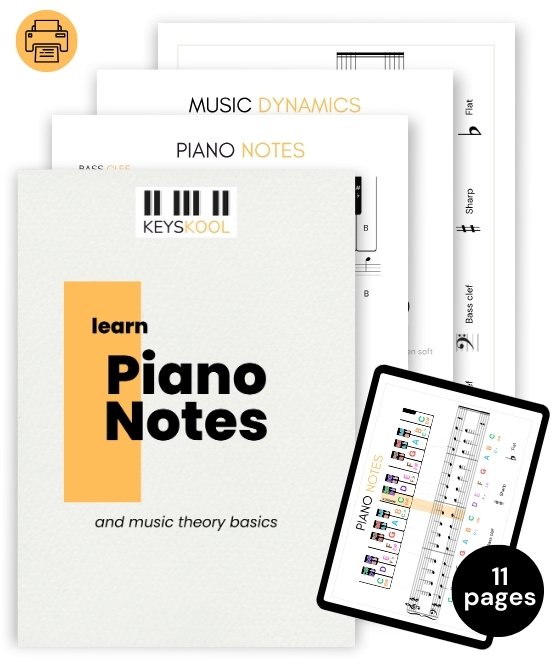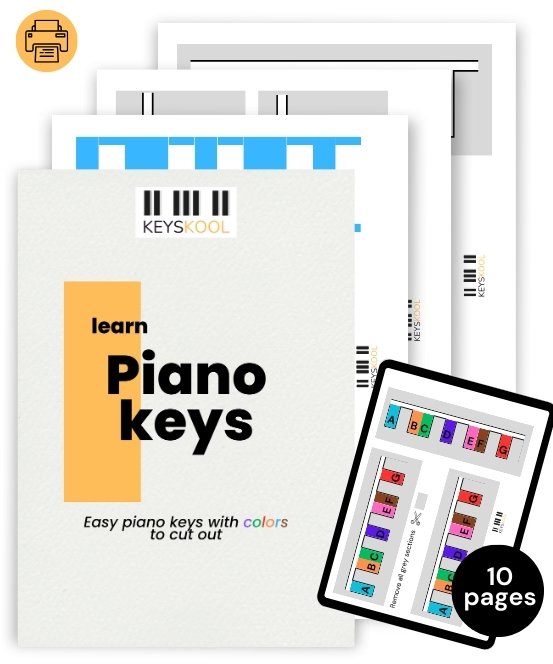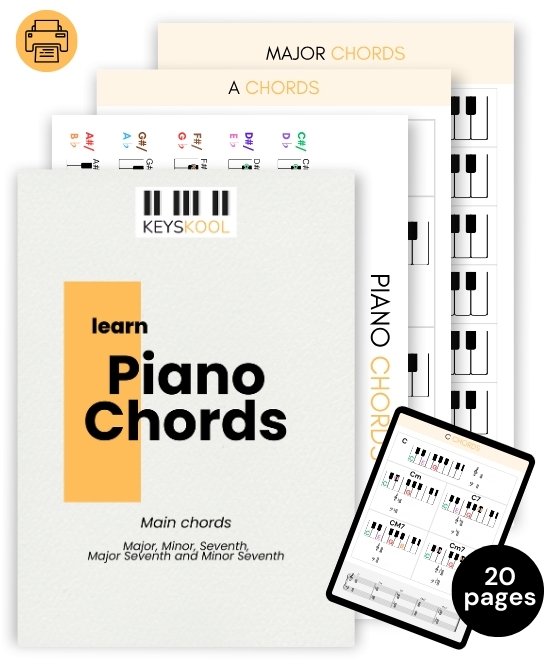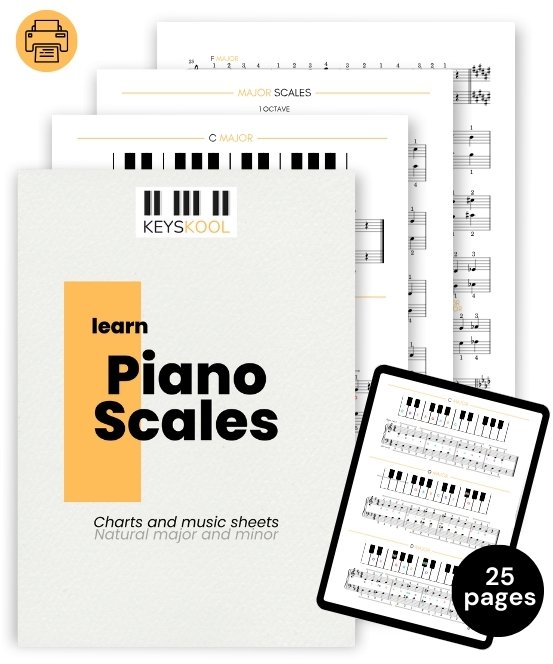Hey there, future piano maestro! Get ready to tickle those ivories as we dive headfirst into the wild and wonderful world of piano theory. Now, don’t let that word ‘theory’ scare you off. We’re not about to dive into some complex physics principle or mathematical theorem. Nope, this is all about the beautiful language of music. Understanding piano theory is like having a GPS while you navigate the vast landscape of the piano. So, fasten your seatbelt and get ready for a fun ride into the essential step-by-step guide to theory piano. Remember, every great pianist was once a beginner too!
Have you ever wondered why theory piano is essential for beginners? Well, let’s find out together!
The Importance of Theory Piano for Beginners
As a novice pianist, you might be eager to leap straight into playing your favorite tunes. However, understanding the basics of theory piano is like getting a roadmap for your musical journey.
- Firstly, theory piano gives you a solid foundation. It’s like learning the grammar of a new language. By understanding how the notes, scales, and chords work together, you’ll have a much easier time learning new songs and even composing your own.
- Secondly, theory piano helps you communicate with other musicians. It’s the universal language of all musicians, not just pianists. By understanding it, you can collaborate more effectively with others, whether it’s playing in a band or just jamming with friends.
- Lastly, it deepens your appreciation for music. You’ll start to recognize patterns and structures in the music you listen to, which can make your listening experience even more enriching.
So, there you have it! Theory piano might seem daunting at first, but trust me, it’s worth it. So, why not take the plunge and start your musical journey today? Remember, you’ve got this!

Printable Theory of piano music PDF with beautiful charts
Decoding music sheets and learning music theory made easy with our beautiful charts.

Step-by-step guide for essential theory piano
Step 1: Familiarizing with the Piano Keyboard
Your first step into the world of piano playing starts with understanding the keyboard. The white keys represent the ‘natural’ musical notes – A, B, C, D, E, F, G, while the black keys represent the ‘sharp’ or ‘flat’ notes. Spend some time each day just exploring the keys and their corresponding notes.
Step 2: Learning the Notes and Scales
Now that you’re comfortable with the keyboard, let’s move on to notes and scales. Scales are a series of notes played in a specific order. The C Major scale, which consists of all the white keys from C to the next C, is a great starting point. Practicing scales is not only a great exercise for your fingers but also helps you understand music theory better.
“Music is a higher revelation than all wisdom and philosophy.” – Ludwig van Beethoven
Step 3: Learning the Basic Chords
Chords form the backbone of most songs. A chord is when three or more notes are played simultaneously. Start with learning the basic chords like C Major, D Major, E Major, and so forth. You’ll find these chords appearing frequently in many songs.
Step 4: Practicing Finger Placement
Proper finger placement is crucial to playing the piano effectively. Each finger is assigned to a certain key when playing scales or chords. The thumb is finger 1 and the little finger is finger 5. It might feel unnatural at first, but with regular practice, you’ll soon get the hang of it.
Step 5: Simple Exercises to Improve Skills a Little Everyday
Working on simple exercises daily can tremendously improve your skill. It could be practicing a scale, a chord progression, or a finger exercise. The key is consistency. Even 15 minutes of focused practice daily can lead to significant improvements over time.

Step 6: Choose an Easy Song and Start!
Now comes the fun part! Choose a simple song that you enjoy and start learning it. It’s a thrilling experience to play a whole song from start to finish, and it’s a great way to apply everything you’ve learned. Don’t worry about making mistakes, just enjoy the process.
Learning to play the piano is a journey. It’s okay to progress at your own pace. The most important thing is to enjoy the process and celebrate your progress along the way.
Did you know? The piano was invented around the year 1700 and has since become one of the most popular instruments for music theory education due to its clear, linear representation of the musical pitch. Source: Piano: The Making of a Steinway Concert Grand
Essential Tips and Tricks for the Beginner Pianist
Let’s dive into some handy tips and tricks that will help you master the basic theory piano and avoid common pitfalls.
1. Mastering the Notes
The first step in your musical journey is to familiarize yourself with the notes. They are your piano’s language, and understanding them is key to playing fluently. Start with the basics and gradually work your way to more complex notes. A good tip here is to practice saying the notes out loud as you play them. This reinforces your learning and makes it easier to remember the notes.
2. Conquering the Scales
Scales might seem intimidating at first, but they are actually your best friend. Practicing scales improves your finger technique, helps you understand key signatures, and enhances your musical ear. Start with the C Major scale and work your way through other scales. Remember, slow and steady wins the race. It’s better to play slowly and accurately than fast and incorrectly.
3. Chording Your Way
Chords are the building blocks of most songs. Understanding how to build and play chords will greatly enhance your playing ability. Begin with major and minor chords before moving on to seventh chords and inversions. A helpful trick is to practice chord transitions. This helps to make your playing smoother.
4. Stay Motivated
Learning an instrument requires patience and perseverance. There will be days when you feel like you’re not making progress. When this happens, remind yourself of why you started. Listen to your favorite songs, attend a live concert, or watch a musical performance. These can reignite your passion and keep you motivated.

5. Avoid Common Mistakes
Every beginner makes mistakes, but the key is learning from them. One common mistake is not using the correct finger positions. This can limit your playing speed and make it harder to play complex pieces. Always follow the recommended fingerings. Another mistake is not practicing regularly. Aim for consistent, focused practice sessions rather than long, infrequent ones.
Remember, the piano is an instrument of passion. Enjoy the journey and don’t stress about the destination. Keep these tips in mind, stay positive, and you’ll be playing beautiful music before you know it. Happy practicing!



